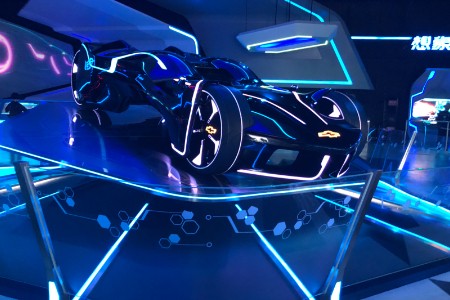远征A2人形机器人成功完成106.286公里跨省行走,创下全球首次人形机器人跨省行走吉尼斯世界纪录。
1. 行走从苏州金鸡湖到上海外滩,连续无间断,面对柏油、瓷砖、砂石等多种路面及复杂天气考验。
2. 全程软件持续运行,感知避障系统实时识别行人、外卖员等交通参与者,确保行走连续和安全。
团队通过高强度测试保障机器稳定性。
1. 挑战前开展超3000小时全自主行走测试,覆盖夜间弱光、雨天湿滑、砖石砂石等条件。
2. 37摄氏度高温、地面61摄氏度的24小时测试,机器人未过温摔倒,验证热管理系统可靠性。
量产与功能快速提升。
1. 从研发早期仅两台损坏设备,到两三个月实现“一个月不坏”初版;2024年出货100台目标达成。
2. 当前机器人具备多语言交互能力(英语、西班牙语、德语),开发沪语、粤语方言适配;内部递送任务支持扫码下单,妥善处理多用户需求。
应用场景和未来目标。
1. 主要应用于讲解、接待、导览等泛语言工作,以及文娱表演歌舞;未来重点拓展康养陪伴和地下煤矿、消防等危险特种作业。
2. 2026年目标实现“准零维护”,提升任务成功率和泛化性,并计划应用全身触觉技术和更亲肤材料。
智元机器人通过106公里行走挑战成功进行品牌营销,凸显产品在极端环境下的可靠性。
1. 创纪录事件作为营销亮点,全程未关机展示系统稳定性;合伙人王闯强调感知系统强化,应对突发互动安全。
2. 高温测试数据(37摄氏度、地面61摄氏度)和出货1000台提供消费者信任基础,吸引品牌关注。
产品研发创新支持市场竞争。
1. 关节技术攻关实现40个自由度,解决初始“一个月不坏”问题;应用多模态交互能力,快速调整步态适应不同路面。
2. 多语言交互能力扩展到西班牙语、德语,开发方言适配,贴近用户需求,反映消费趋势本土化。
用户行为观察与市场定位。
1. 当前应用聚焦科技馆、企业前台等场景泛语言工作,提供情绪价值;观察用户扫码递送需求变化。
2. 未来康养陪伴和危险作业规划,指导品牌定价和渠道建设,瞄准高增长特种市场。
机器人出货量超过1000台,表示市场增长机会巨大。
1. 2024年出货目标达成,每两个月推送版本更新,根据现场反馈持续优化,提供销售拓展平台。
2. 泛语言工作场景和文娱表演应用,契合消费需求变化,吸引企业客户合作。
事件应对措施展示可学习点。
1. 初量产200台下线,100台有故障;团队150人驻场排查,解决上千问题,成功实现“下线就能自主行走”。
2. 高温测试和挑战事件提供正面影响案例,指导风险提示:避免类似关节、软件问题导致不稳定。
机会提示和最新商业模式。
1. 未来康养陪伴和危险作业作为新兴市场;全触觉技术和材料升级带来技术红利合作方式。
2. 机器人递送任务功能展示轻量级应用潜力,支持电商场景合作;安全考量(路权限制)提供反面教训,需规避风险。
产品生产需求聚焦关节技术与稳定性保障。
1. 量产初期关节、软件和供应商来料问题导致故障;团队驻场逐一排查,解决如“走路一腿直一腿歪”等设计缺陷。
2. 关节技术实现40个自由度突破,确保“准零维护”目标推进,要求高质量生产和数字化测试覆盖。
商业机会在材料与技术支持。
1. 出货1000台需求配件生产;热管理系统中温升控制展示零部件机会,如供电系统优化启示。
2. 未来应用全身触觉技术和亲肤材料,推进电商数字化启示:基于反馈快速迭代供应链管理。
量产启示指导实践。
1. 3000小时测试覆盖多种条件,启示工厂推进电商测试模拟;高温环境稳定性验证提升产品可靠性标准。
2. 多语言功能开发(沪语、粤语)反映本地化需求,指导设计灵活适配多样化场景。
行业发展趋势朝向稳定性和多功能应用。
1. 机器人从实验室走向现实场景,106公里行走验证商用化水平;挑战未采用全自主模式,凸显安全考量需求。
2. 出货1000台数据反映市场规模扩张;未来扩展康养和危险作业,提升解决方案需求。
技术创新提供新机遇。
1. 感知系统强化和多模态交互能力实现实时避障和步态调整,解决客户在复杂环境下的稳定性痛点。
2. 全身触觉技术和亲肤材料计划应用,提供生物亲和解决方案;多语言交互能力应对用户体验改进需求。
痛点和解决方案清晰。
1. 客户痛点如系统漏洞(高温摔倒风险)和功能延迟(早期反应慢);测试覆盖夜间弱光、雨天等复杂条件提供保障方案。
2. 量产问题排查方法(150人驻场)展示系统诊断模式;递送任务功能优化(扫码下单)启发服务流程升级。
商业对平台需求核心在安全与稳定运营。
1. 挑战中采用非全自主模式,因路权与安全考量;L4级robotaxi历史类比提示平台需规避全自主风险。
2. 机器人感知避障系统需实时处理交通参与者,对平台运营管理提出高标准要求。
平台最新做法展示优化策略。
1. 每两个月向客户推送版本更新,基于现场反馈持续迭代;功能扩展到多语言交互(英语、西班牙语等),吸引招商。
2. 当前应用在科技馆、前台场景的管理模式;未来康养和危险作业需求平台支撑,拓展商业边界。
风控与机会平衡。
1. 高温测试数据和3000小时预测试例证稳定性,指导平台风控设计;量产出货超1000台数据增强平台信用。
2. 安全限制(如路权)需平台规避;递送任务功能多用户处理显示效率模型,可复制到平台运营。
产业新动向是机器人从实验室快速商用化。
1. 106公里行走事件验证稳定性水平;出货超1000台展示规模化生产进展;挑战未用全自主模式提示当前限制。
2. 未来计划地下煤矿、消防等危险作业,扩展应用边界,标志行业成熟度提升。
新问题和政策启示浮现。
1. 安全限制如路权问题,影响全自主发展;高温测试热管理成果提供技术规范启示。
2. 量产故障处理(150人排查)反映质量控制挑战;建议政策关注机器人运营法规,避免类似L4级robotaxi延迟。
商业模式创新方向。
1. 泛语言工作到文娱表演的现有模型;康养陪伴和轻量级递送任务提供新商业模式潜力。
2. “准零维护”目标和全身触觉技术应用,指向人机互动范式;递送功能扫码下单案例启发任务分配机制研究。
返回默认













